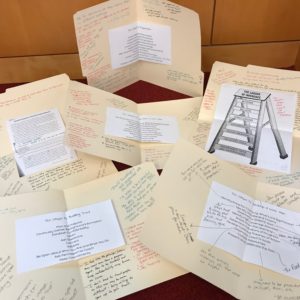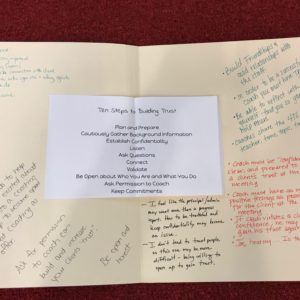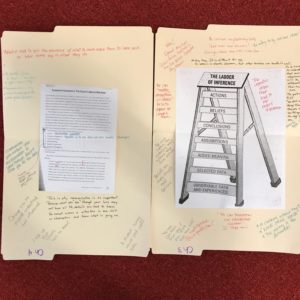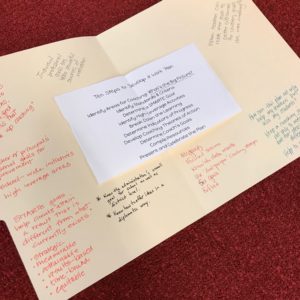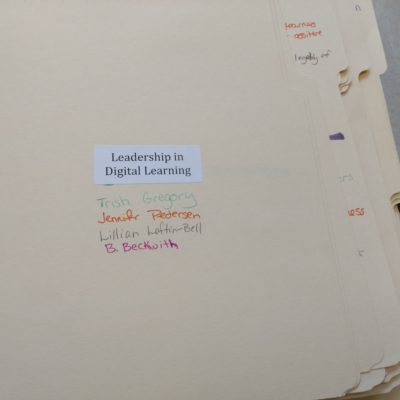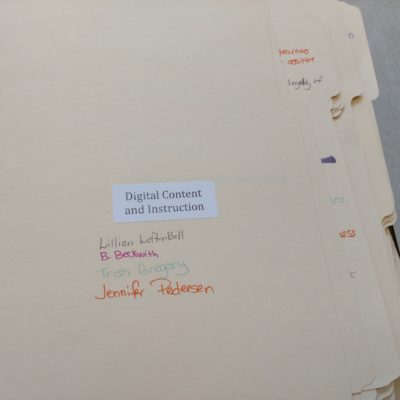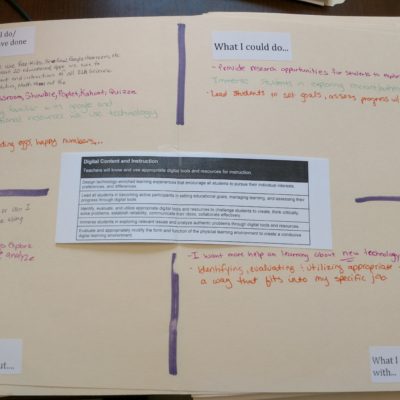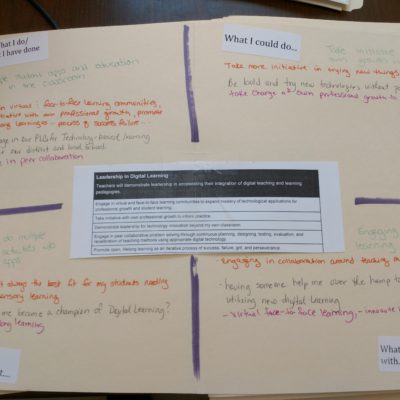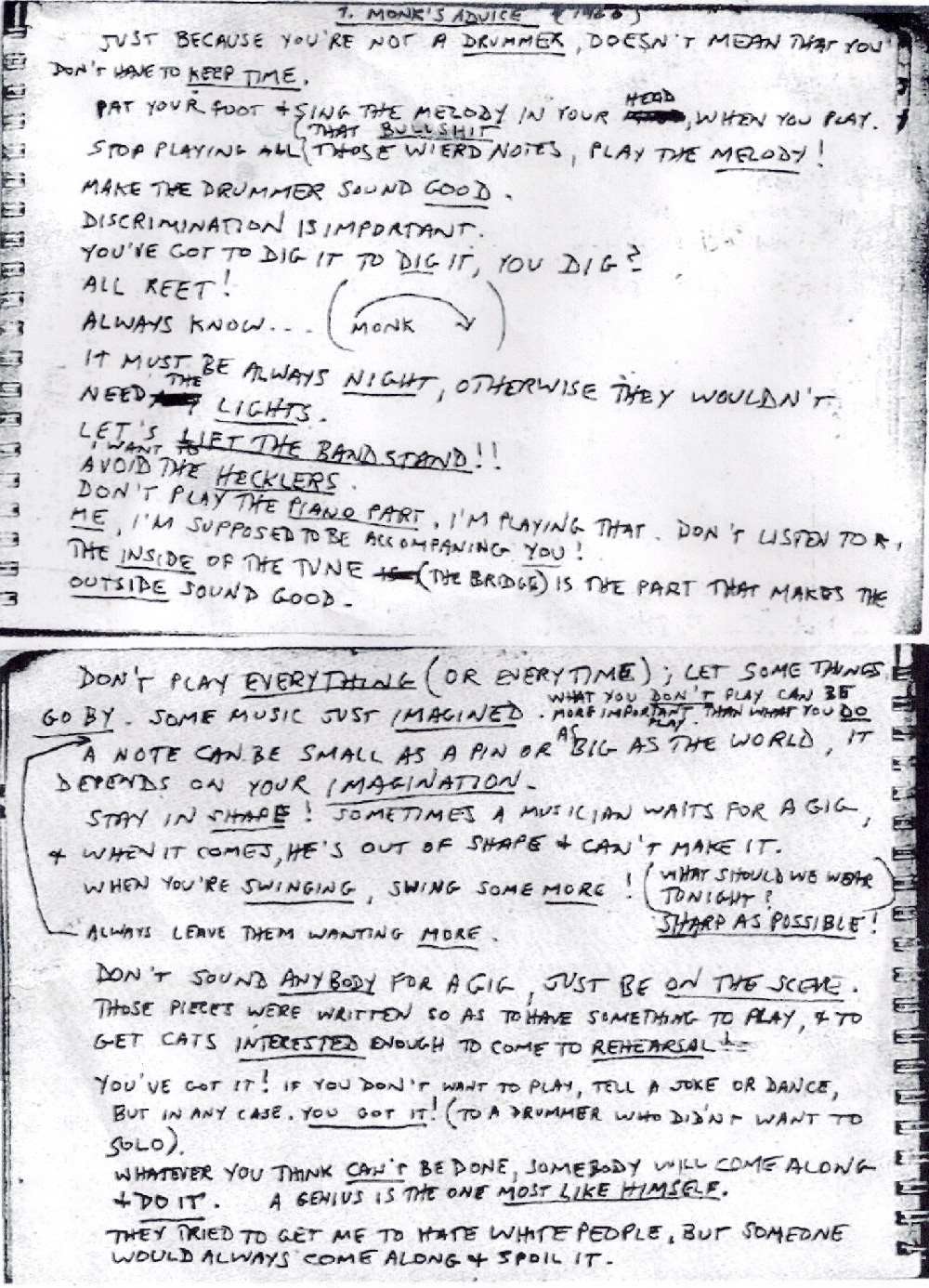Written conversation is a pedagogical method that puts reflection, analysis and synthesis at the forefront of learning. Whether using this method with students or adults, it allows participants to engage in a learning experience where everyone is on a level playing field and all voices are amplified.
I have been using this method both for learning experiences for students and in professional learning experiences for teachers for the past 6 or 7 years, and the results are always the same. Participants walk away from the experience feeling empowered as learners and contributors.
My interpretation of the written conversation method is largely based on the work of Harvey Daniels and Buffy Hamilton. With the excellent guidance from these two educators, I have been able to craft various versions of written conversations – all of which allow freedom and space for reflection.
In October, I was able to bring this method to the NC Digital Leaders Coaching Network, a program that I help facilitate at Friday Institute. With a few minor adjustments (because of logistics), this method for “discussing” a text became the catalyst for our coaches to have very powerful conversations about their role in their districts and buildings.
*You can read more about this method in a Friday Institute PLLC blog post written by my colleague Greg Garner.
This method has been one of the most powerful pedagogical strategies I’ve used. I have seen the meekest and most unengaged students blossom and come to life as their voices are amplified. With my colleagues and other educators, I’ve seen this method give equal validity to everyone’s ideas, help people engage in active “listening” and serve as a springboard for deeper conversations and partnerships. And one of the most fantastic things about this is that anyone can do it – no tech required. It is truly a method that you can read about today and use in your classroom tomorrow.
How Written Conversation Works
As a pedagogical method written conversations are very simple. The facilitator chooses texts to be written around, creates the posters (large versions of the texts) and introduces the method to participants. Participants are then given short amounts of time to read and respond to each text (in a station rotation format) and to respond to the comments of their peers – all done silently, only through writing. During the activity I often schedule in a small group share where I pose a question and allow participants to partner up and discuss, out loud. This helps to ease the desire to say what you think, rather than simply writing it down.
Let’s start with the texts.
Written conversation requires that we stretch our idea of a text. We tend to think of text as simply written words – however, texts can be so much more. In the past, I’ve used infographics, charts, graphs, political cartoons, maps, images, poetry, tweets from Twitter feeds/hashtags, excerpts from both fiction and non-fiction works and even students created work. The texts you chose as the facilitator, depends on the conversation you want participants to have. I find that often, the most powerful written conversations give participants the opportunity to write around all different types of texts.
Written conversation is generally not a stand alone activity – it is often used as either an opening or closing to a larger learning experience. For instance, if AP US History students are preparing to write/answer a document based question, we might use a written conversation to analyze and synthesize the primary source documents they will be using in their responses. This method would give those students the opportunity to analyze the texts alongside their peers, making connections, asking questions and giving insight. The most important part about the texts used is that they are chosen intentionally. When using written conversation, I generally try to limit the amount of text on each poster. Regardless of which type of text I choose, I try to use an important chunk. The goal is to have participants analyze small portions of something, and you can always share the links to the entire text with them afterwards.
Now let’s dive into responding to the texts.
I like to take large pieces of bulletin board paper or anchor chart paper and use that as the backdrop for my texts. I try to blow up the size of the text to make it easily readable from 360° as participants move around the table or surface. I set up my written conversation as a station rotation with one text at each station. Participants spend a short amount of time at each station responding to the texts through the lens that we set based on the learning experience. I usually provide markers or Sharpies for writing and never ask that participants sign their names to their thoughts – this helps to create a safe environment where everyone’s thoughts are equally welcomed and amplified.
Prior to engaging in the activity, I take a few minutes, with participants, to discuss responding to the texts. I normally give four suggestions for responses:
- Questions or comments about the text as a whole
- Specific questions or comments about one part of the text (they may highlight, circle, underline, etc. to bring attention to that one part)
- Connections to the real world (this is where we set our lens based on the learning experience at hand)
- Responses to each other’s statements and thoughts
While I’ve never had a student or adult abuse this activity through writing inappropriate comments, this is also when we talk about how to engage in discourse.
Why Written Conversation
As I mentioned, one of the most important aspects of this method is that it amplifies participants’ voices. In garnering reflection about the activity, I’ve found the following takeaways:
- Most, if not all participants are engaged
- Participants can share without fear, including uncertainties about a text
- It helps participants see differing perspectives
- Participants enjoy having their peers explain or offer clarity about texts or ideas
- It offers a way to break down complex texts into easily manageable and understandable parts
- Participants are able to learn, share and reflect during this single activity
- Everyone has an equal voice
If you’re interested in diving into written conversations and exploring how you can use this pedagogical method with your students or colleagues, these resources might help you get started. I’ve also had the great pleasure of chatting with a few incredible members of my PLN about how they’ve used written conversations in their schools and districts. You can read more below about their efforts. Also, please feel free to reach out to any of them for more information!
Cathy Littleton | @LMESMediaCenter
What She Did
Cathy is a Media Coordinator who used this method with her middle school students. Some of her variations include:
- Practice analyzing graphs and charts
- Introduction to simple machines
- Current events and making connections to content
- Physics word problems – considering what is the question asks, how they know and strategies for solving
Alicia Ray | @iluveducating
What She Did
Alicia is a Lead Digital Learning & Media Innovation Facilitator. She used written conversations to engage teachers in discussion about The Art of Coaching for the group’s book study.
Cathy Musci | @CathMus
Cathy, an Instructional Technology Facilitator, used written conversations to lead an in depth discussion of the NC Digital Learning Competencies for teachers. She began by splitting the 4 DLCs by competency. Instead of creating posters, Cathy used the folder method (like the one mentioned in this post) to have participants respond to the texts. Each of her PLCs (grade levels K-5, 4 to a group) answered 4 questions written one in each quadrant of each folder:
- What I do/have done
- What I could do
- What I have questions about
- What I need help with
Note the different colored pens with signatures on the front to match. This gave her the ability to support individual needs as well as overall team goals.
As an extension of this conversation, Cathy created individual folders in her ITF Google Drive for each certified staff member to give them a dedicated location to store all that is related to the DLCs where they can “meet” to move them forward. She included a DLC checklist to allow them to focus on what they need to work on, a copy of the DLCs, a copy of the ISTE standards for students and DLC Teacher Reflection Guide.
Christy Howe | @christychowe
What She Did
Christy, an AIG teacher, has used this method in many ways. One that she shared was a version she used to co-teach and explore innovative instructional strategies with 5th grade. Students were given various resources and articles about Halloween. She used the folder method mentioned above for students to annotate what they noticed and learned from each text. Christy didn’t just facilitate the activity, she actually did this with students as a part of one of the rotations. Everyone used a different color marker, which the teacher assigned, so she could address any questions or concerns for each of the students.
Christy used this method as the catalyst for a modified Socratic seminar style discussion. Students reflected on what surprised them and what they took away from each text. They were studying theme, this became a lens through which they analyzed each text. She found that her students easily adapted to this way of discussing texts. Students felt safe sharing and did a very good job commenting on each other.
In her variation, the color coded markers allowed her to reflect on the types of comments students were leaving – which turned out to be mostly questions and surface level observations. She now knows where to go next time, what scaffolding is needed and what goals she can help students set for their comments next time. Christy also reflected on how written conversation allowed students to read so much more than usual. During the short activity, they got to read 6 texts, including one infographic, very heavy on images. Using this method gave students the opportunity to learn how to read different kinds of texts.

